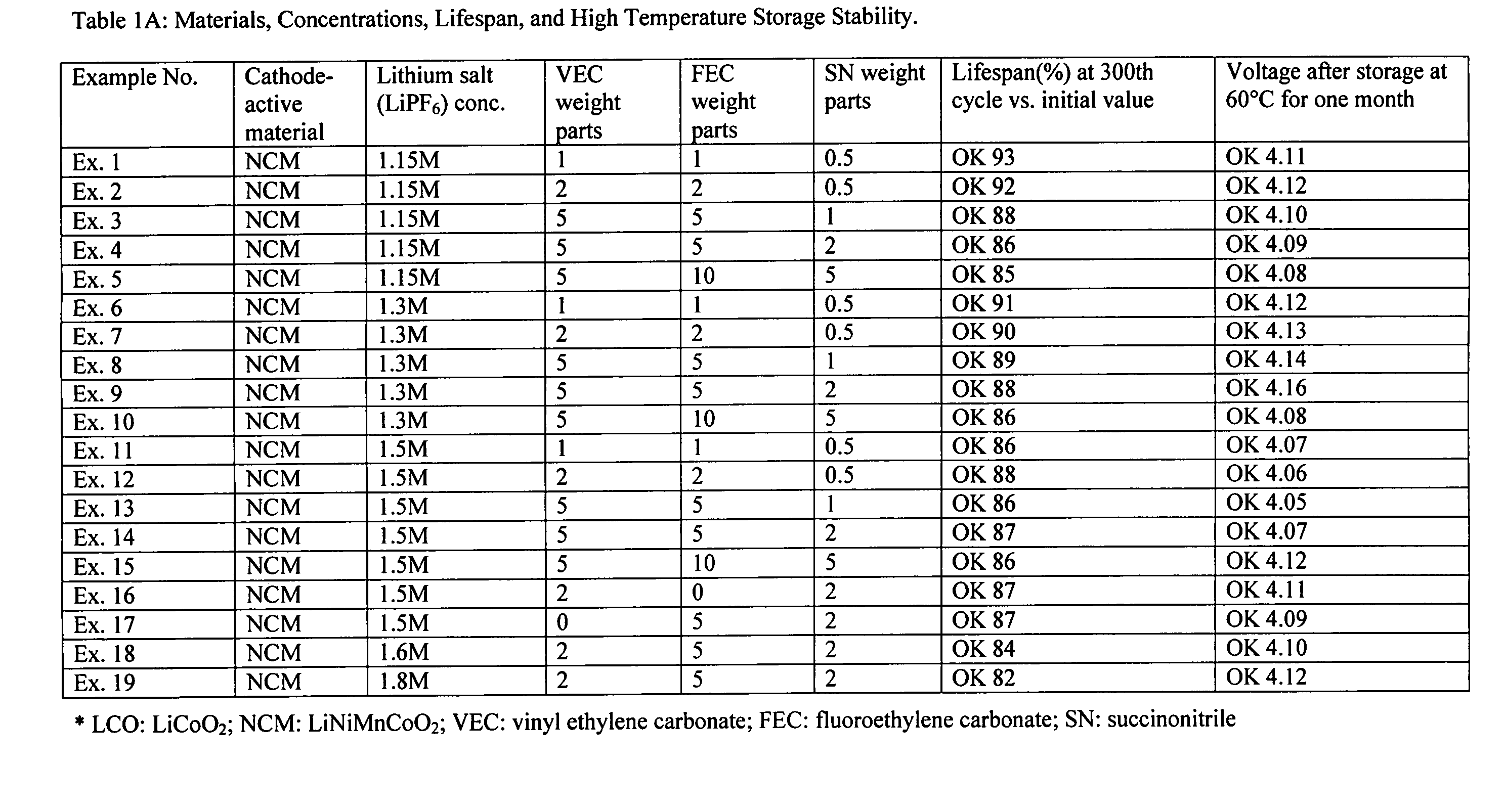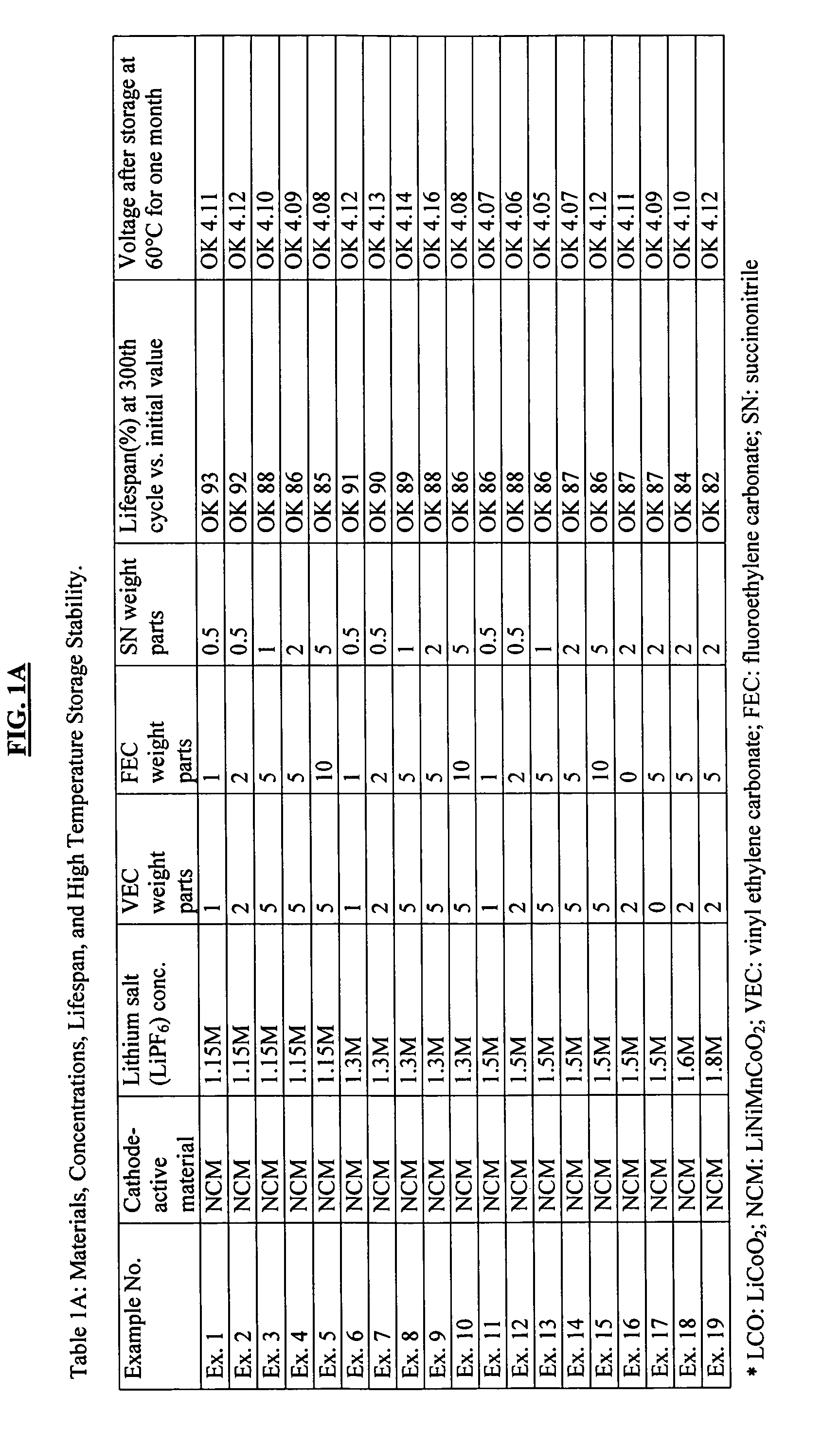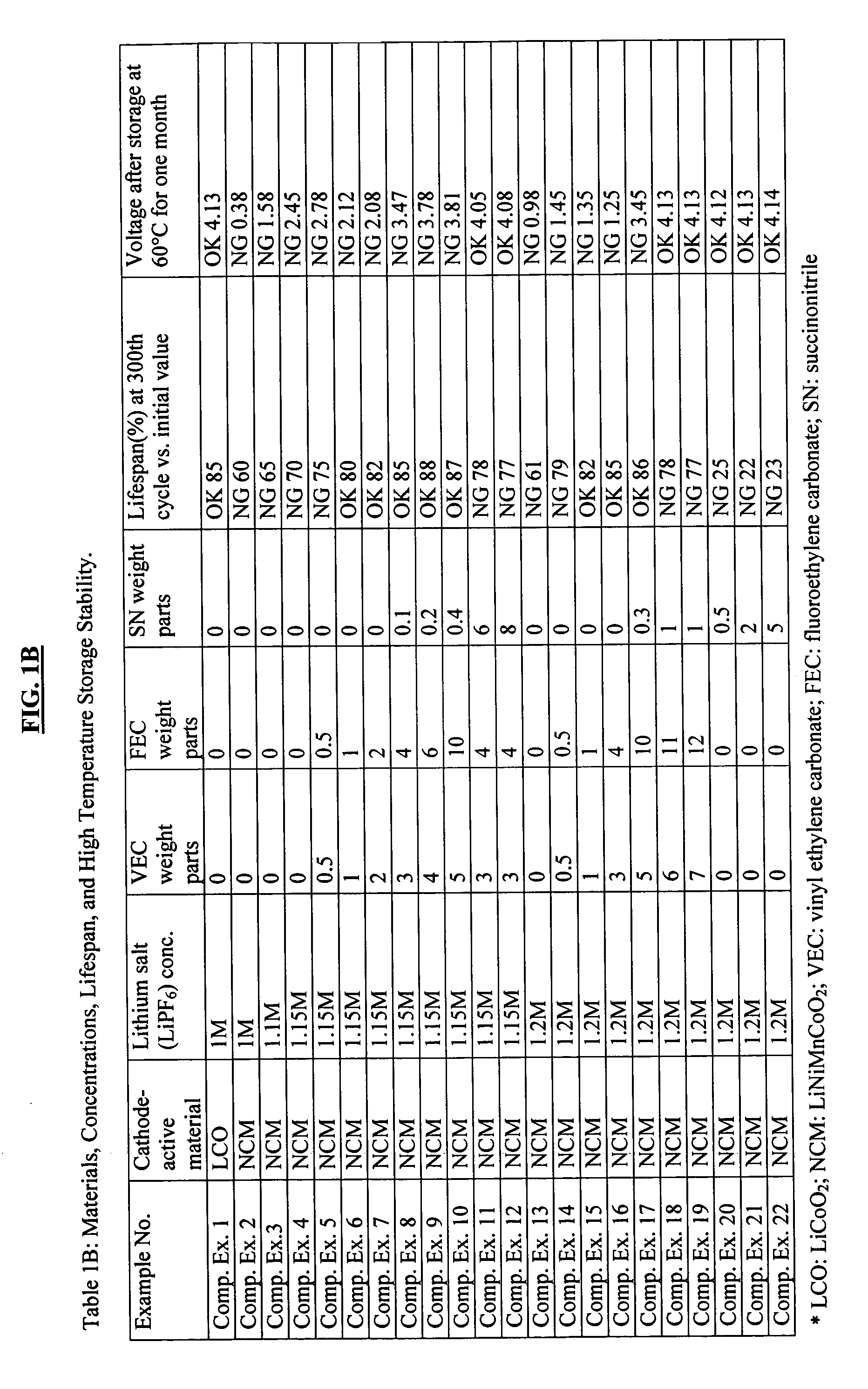Rechargeable battery and associated methods
a rechargeable battery and associated technology, applied in the field of rechargeable batteries, can solve the problems of poor voltage accompanied by a voltage drop undesirable dendritic growth of nickel or manganese metal, and poor longevity and storage characteristics of the charged battery, and achieve excellent lifespan and storage characteristics. , the effect of reducing production costs
- Summary
- Abstract
- Description
- Claims
- Application Information
AI Technical Summary
Benefits of technology
Problems solved by technology
Method used
Image
Examples
examples
[0068]The following Examples and Comparative Examples are provided in order to set forth particular details of one or more embodiments. However, it will be understood that the embodiments are not limited to the particular details described.
example 1
[0073]As described above, in the case of a battery using a ternary cathode-active material, metal cations from the active material dissolved in the electrolyte may undergo reduction by receiving electrons from a surface of the anode-active material, which may result in undesirable dendritic growth of, e.g., a nickel or manganese metal. Then, the dendrite may penetrate into a separator film, which in turn may lead to the occurrence of a micro short circuit inside the battery, consequently resulting in the problems associated with a voltage drop of the charged battery. In order to investigate whether the battery in accordance with an embodiment has overcome these problems, high-temperature storage characteristics of the battery were tested. Further, in order to examine whether succinonitrile addition improves or deteriorates the life of a battery, lifespan characteristics at room temperature were studied according to the following experimental procedure.
[0074]Room-Temperature Lifespan...
PUM
| Property | Measurement | Unit |
|---|---|---|
| temperature | aaaaa | aaaaa |
| weight | aaaaa | aaaaa |
| concentration | aaaaa | aaaaa |
Abstract
Description
Claims
Application Information
 Login to View More
Login to View More - R&D
- Intellectual Property
- Life Sciences
- Materials
- Tech Scout
- Unparalleled Data Quality
- Higher Quality Content
- 60% Fewer Hallucinations
Browse by: Latest US Patents, China's latest patents, Technical Efficacy Thesaurus, Application Domain, Technology Topic, Popular Technical Reports.
© 2025 PatSnap. All rights reserved.Legal|Privacy policy|Modern Slavery Act Transparency Statement|Sitemap|About US| Contact US: help@patsnap.com



